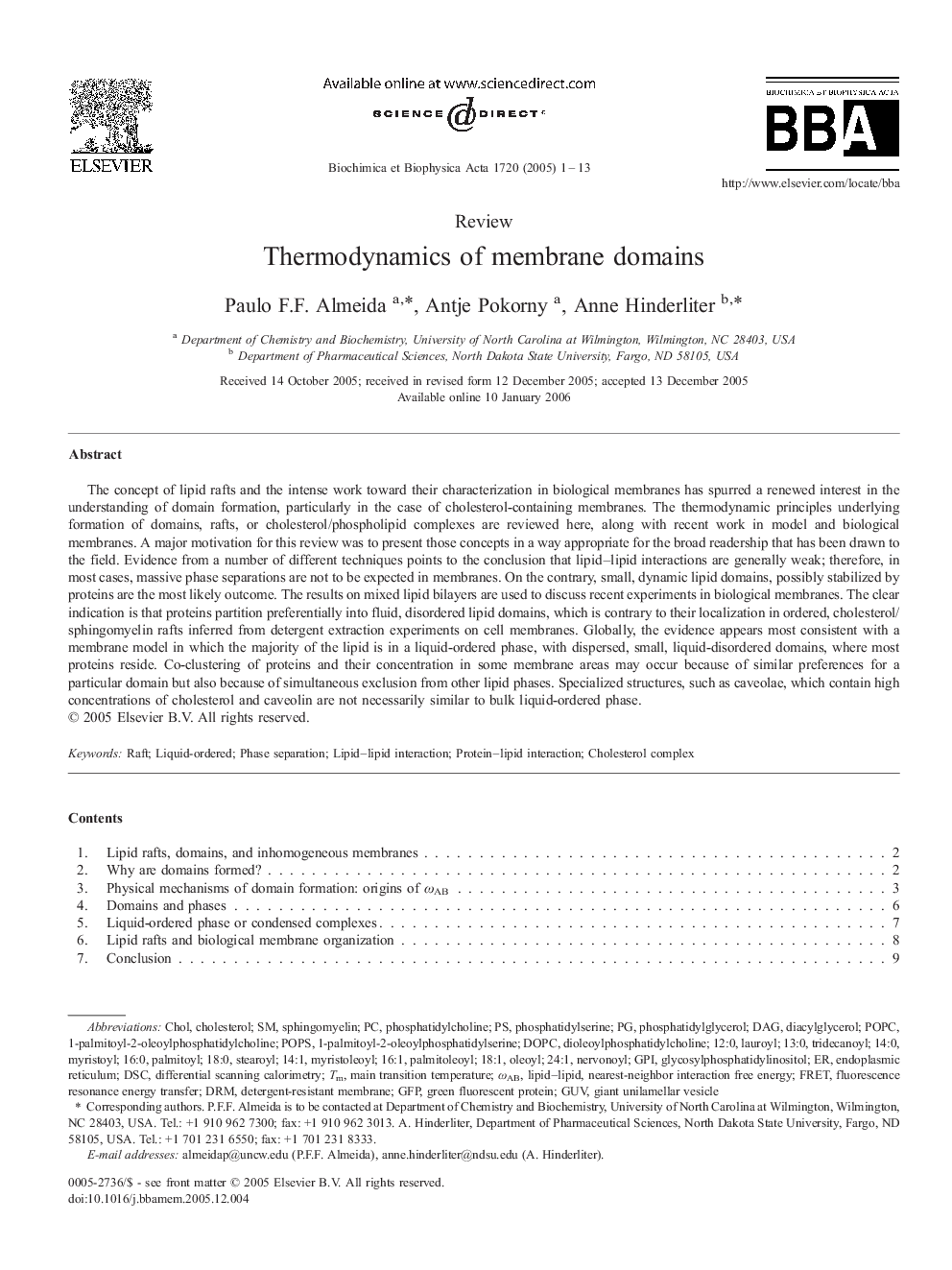| Article ID | Journal | Published Year | Pages | File Type |
|---|---|---|---|---|
| 9885095 | Biochimica et Biophysica Acta (BBA) - Biomembranes | 2005 | 13 Pages |
Abstract
The concept of lipid rafts and the intense work toward their characterization in biological membranes has spurred a renewed interest in the understanding of domain formation, particularly in the case of cholesterol-containing membranes. The thermodynamic principles underlying formation of domains, rafts, or cholesterol/phospholipid complexes are reviewed here, along with recent work in model and biological membranes. A major motivation for this review was to present those concepts in a way appropriate for the broad readership that has been drawn to the field. Evidence from a number of different techniques points to the conclusion that lipid-lipid interactions are generally weak; therefore, in most cases, massive phase separations are not to be expected in membranes. On the contrary, small, dynamic lipid domains, possibly stabilized by proteins are the most likely outcome. The results on mixed lipid bilayers are used to discuss recent experiments in biological membranes. The clear indication is that proteins partition preferentially into fluid, disordered lipid domains, which is contrary to their localization in ordered, cholesterol/sphingomyelin rafts inferred from detergent extraction experiments on cell membranes. Globally, the evidence appears most consistent with a membrane model in which the majority of the lipid is in a liquid-ordered phase, with dispersed, small, liquid-disordered domains, where most proteins reside. Co-clustering of proteins and their concentration in some membrane areas may occur because of similar preferences for a particular domain but also because of simultaneous exclusion from other lipid phases. Specialized structures, such as caveolae, which contain high concentrations of cholesterol and caveolin are not necessarily similar to bulk liquid-ordered phase.
Keywords
PoPCLipid–lipid interactionoleoylStearoylDOPCDSCDRMGPiGUVCHOLGFP1-palmitoyl-2-oleoylphosphatidylcholine14:016:016:118:018:1POPssphingomyelinFluorescence resonance energy transferFRETProtein–lipid interactionPhase separationmain transition temperaturedioleoylphosphatidylcholinediacylglycerolRAFTDAGendoplasmic reticulumdetergent-resistant membraneGiant unilamellar vesiclephosphatidylcholinephosphatidylglycerolPhosphatidylserineLiquid-orderedPalmitoylgreen fluorescent proteinDifferential scanning calorimetrycholesterolglycosylphosphatidylinositol
Related Topics
Life Sciences
Biochemistry, Genetics and Molecular Biology
Biochemistry
Authors
Paulo F.F. Almeida, Antje Pokorny, Anne Hinderliter,
